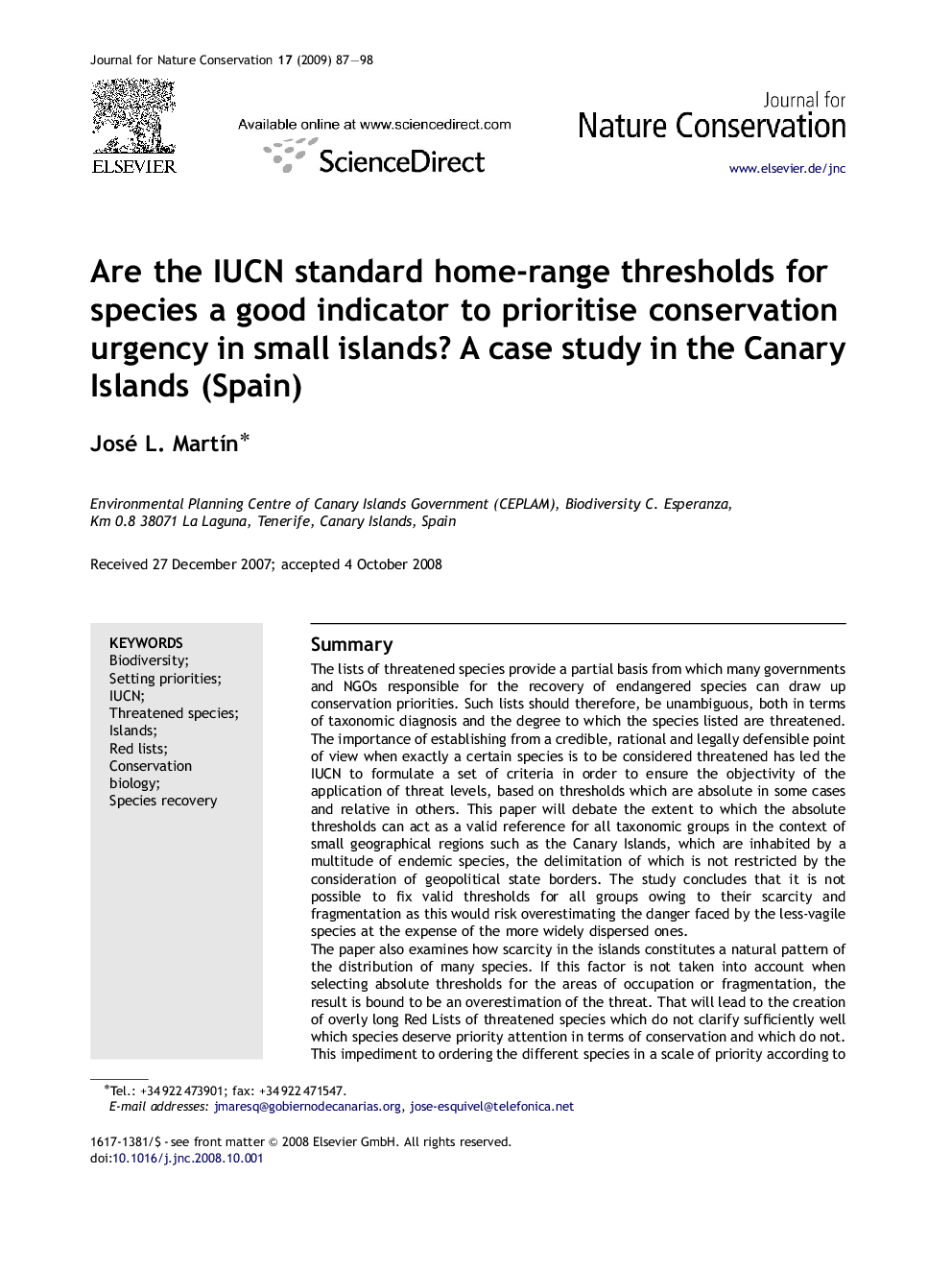| Article ID | Journal | Published Year | Pages | File Type |
|---|---|---|---|---|
| 4400225 | Journal for Nature Conservation | 2009 | 12 Pages |
SummaryThe lists of threatened species provide a partial basis from which many governments and NGOs responsible for the recovery of endangered species can draw up conservation priorities. Such lists should therefore, be unambiguous, both in terms of taxonomic diagnosis and the degree to which the species listed are threatened. The importance of establishing from a credible, rational and legally defensible point of view when exactly a certain species is to be considered threatened has led the IUCN to formulate a set of criteria in order to ensure the objectivity of the application of threat levels, based on thresholds which are absolute in some cases and relative in others. This paper will debate the extent to which the absolute thresholds can act as a valid reference for all taxonomic groups in the context of small geographical regions such as the Canary Islands, which are inhabited by a multitude of endemic species, the delimitation of which is not restricted by the consideration of geopolitical state borders. The study concludes that it is not possible to fix valid thresholds for all groups owing to their scarcity and fragmentation as this would risk overestimating the danger faced by the less-vagile species at the expense of the more widely dispersed ones.The paper also examines how scarcity in the islands constitutes a natural pattern of the distribution of many species. If this factor is not taken into account when selecting absolute thresholds for the areas of occupation or fragmentation, the result is bound to be an overestimation of the threat. That will lead to the creation of overly long Red Lists of threatened species which do not clarify sufficiently well which species deserve priority attention in terms of conservation and which do not. This impediment to ordering the different species in a scale of priority according to real urgency in terms of conservation makes the B and D criteria of the IUCN less consistent when using them as benchmarks to help establish conservation priorities in oceanic archipelagos such as the Canary Islands.
